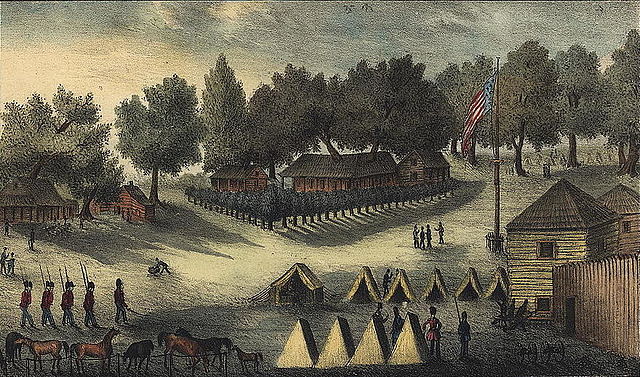Fort Brooke was a historical military post established at the mouth of the Hillsborough River in present-day Tampa, Florida in 1824. Its original purpose was to serve as a check on and trading post for the native Seminoles who had been confined to an interior reservation by the Treaty of Moultrie Creek (1823), and it served as a military headquarters and port during the Second Seminole War (1835–1842). The village of Tampa developed just north of the fort during this period, and the area was the site of a minor raid and skirmish during the American Civil War. The obsolete outpost was sparsely garrisoned after the war, and it was decommissioned in 1883 just before Tampa began a period of rapid growth, opening the land for development.
Fort Brooke ca. 1840
Hillsborough River (Florida)
The Hillsborough River is a river located in the state of Florida in the United States. It arises in the Green Swamp near the juncture of Hillsborough, Pasco and Polk counties, and flows 60 miles (97 km) through Pasco and Hillsborough Counties to an outlet in the city of Tampa on Hillsborough Bay. It includes 4 nature trails extending for over 7 miles (11 km), making it popular among hikers. The name Hillsborough River first appeared on a British map in 1769. At the time, the Earl of Hillsborough was the British Secretary of State for the Colonies, and thus controlled the pensions of the surveyors working in the American colonies, which included East Florida.
Hillsborough River (Florida)
Survey of the middle Hillsborough River in 1843
The original dam under construction in 1897
Postcard view of the Hillsborough River in 1910





